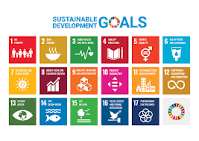THE SILENCE OF TEEN BOYS: WHAT EMOTIONS ARE WE TEACHING THEM TO HIDE?
In a typical Nepali classroom or living room,
boys are expected to be bold, logical, and strong. They are cheered for
athleticism, pushed to compete, and praised for stoicism. But ask a teenage boy
how he feels—and often, there is a pause, a shrug, or a quick deflection: “Ma
thik chhu.” He might joke it off or change the subject entirely. What is often
mistaken for emotional calm is, in fact, a learned silence—one that many boys
have been practicing since childhood.
In Nepal, much like in many cultures, boys
are taught early that certain emotions are acceptable—anger, pride,
confidence—while others like sadness, fear, and vulnerability are signs of
weakness. Expressions of pain or anxiety are met with dismissive phrases like
“kasto choriko jasto” (you’re acting like a girl) or “nai roko bhane ta ke ko
manxe?” (if you cry, what kind of man are you?). These messages are not just
spoken—they are enforced through behavior, jokes, and even silence. Over time,
they accumulate into emotional habits: boys learn to internalize, to suppress,
and to cope alone.
This
emotional conditioning has consequences that ripple far beyond adolescence.
Studies across cultures have shown that when boys are discouraged from
expressing their feelings, they are more likely to experience stress, anxiety,
and depression in isolation (Mahalik et al., 2003). They are less likely to
seek help, talk about their mental health, or even recognize their own
emotional needs. In Nepal, where mental health is still a taboo subject and
support systems are scarce, this silence becomes even more dangerous.
And
yet, the silence of boys is often misunderstood. It is not that they don’t
feel—it’s that they don’t feel safe to express. School environments often
reward boys for performance but rarely provide space for emotional honesty.
Families often expect boys to be protectors but not the protected. Even among
peers, emotional openness can lead to ridicule or rejection. The result is a
generation of young men navigating pressure, grief, fear, and confusion without
the vocabulary or permission to name it.
This
silence does not only harm the boys themselves. It affects how they relate to
others. Emotionally repressed boys often grow into men who struggle to
communicate in relationships, who resort to anger as their only outlet, or who
pass on the same emotional limitations to their sons. The cycle quietly
continues, normalized by culture and reinforced by shame.
But
this is not a fixed destiny. There are signs of change—and opportunities for
more. In schools that introduce emotional literacy, boys begin to open up. In
families where vulnerability is met with empathy rather than mockery, boys
begin to trust. In conversations where men speak honestly about their inner
lives, younger boys start to believe they can too.
What
we need is not to make boys more emotional—but to make it safe for them to be
fully human. We must stop equating masculinity with emotional restriction.
Instead, we should teach that strength includes self-awareness, that courage
includes vulnerability, and that a “real man” is not someone who hides pain but
someone who understands it.
As a
society, we must ask ourselves: what are we losing when we raise boys who can’t
cry, who can’t name their fears, or who believe that silence is safer than
truth?
It’s
time to stop measuring boys by how tough they are and start supporting them for
how honest they can be.

Comments
Post a Comment